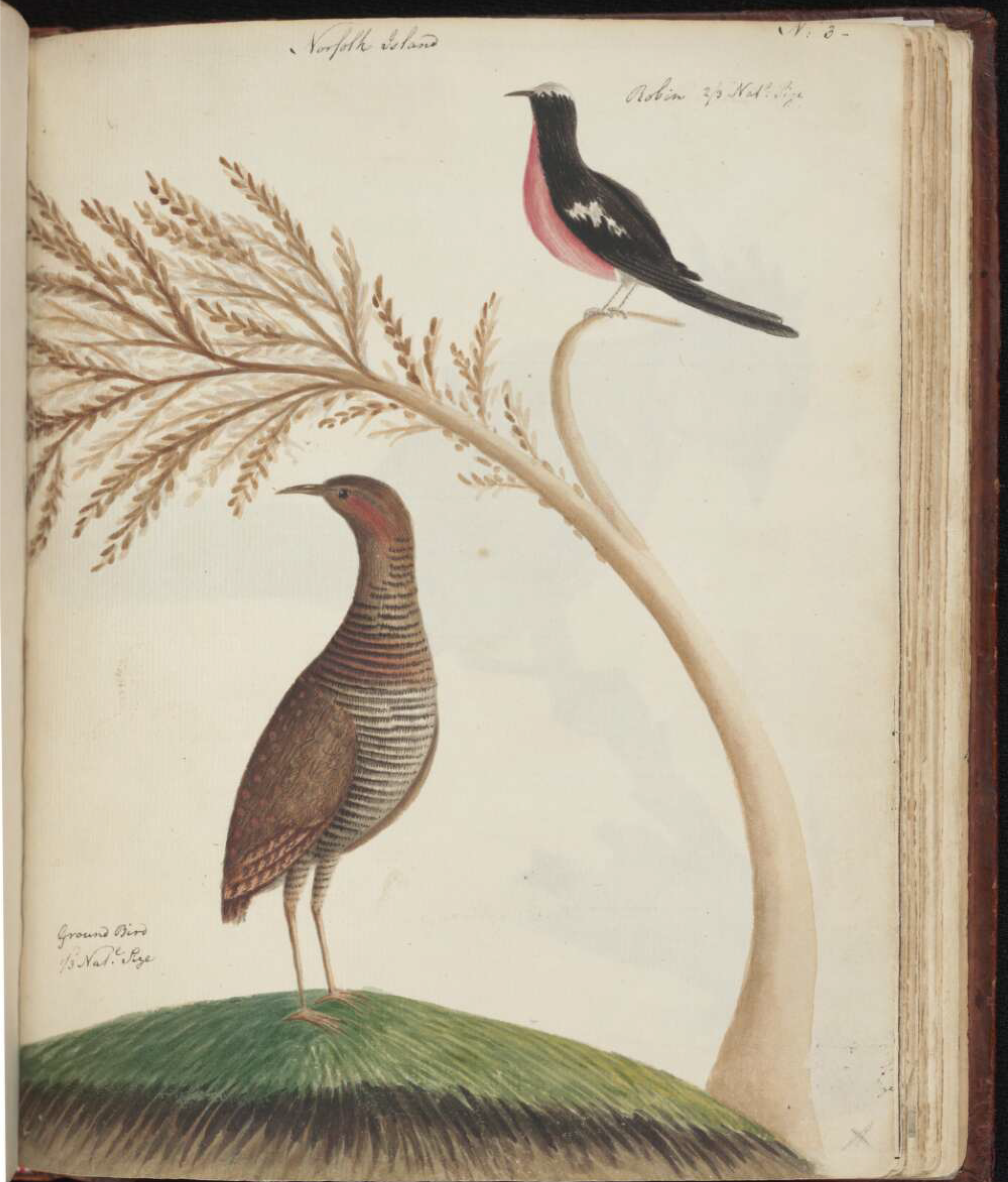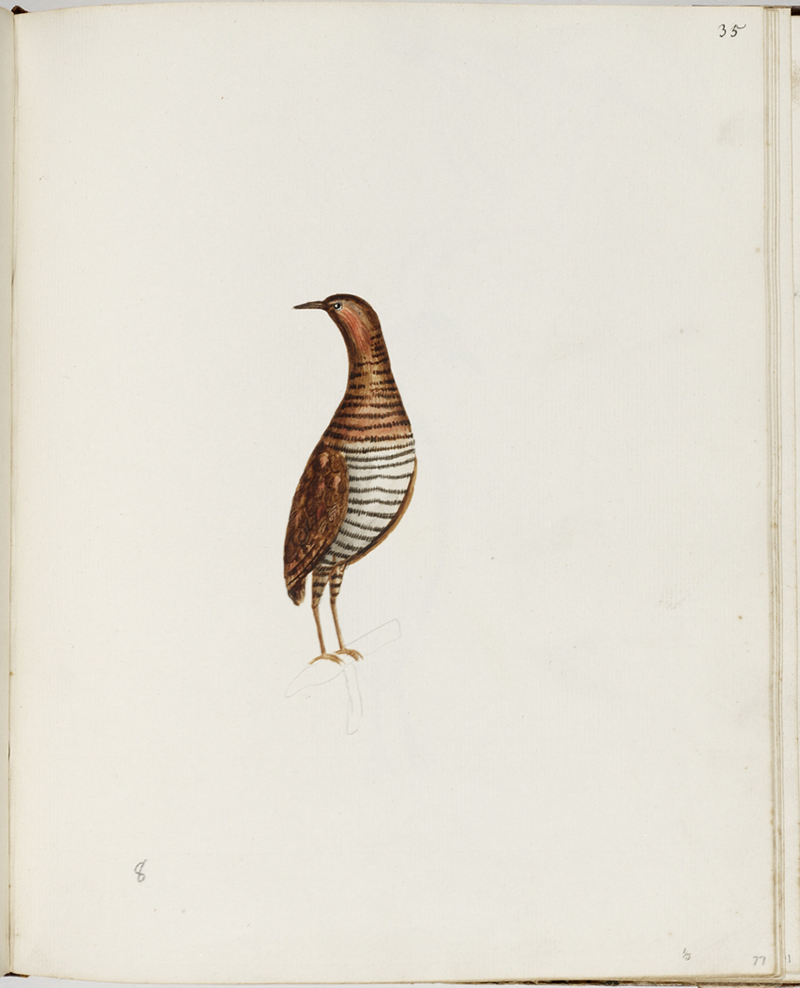Gallirallus sp. nov. ‘Norfolk Island’
Norfolk Island rail
Taxonomy & Nomenclature
Synonym/s: Gallirallus undescribed species (Tyrberg, 2009:79)
The species has not been given a scientific name, so the informal name appended gives its geographic origin. Its remains have been described as larger than those of G. philippensis and was potentially flightless (Meredith, 1985, 1991), with an estimated weight of ?250gm compared to 170gm for the latter (Holdaway & Anderson, 2001:94).
Conservation Status
Extinct
Last record: subfossil (Meredith, 1985, 1991) (confirmed); c.1790 watercolour (Hunter & Calaby, 1989) (unconfirmed)
Subfossil remains were reported by (Meredith, 1985, 1991). Two watercolours, the original by John Hunter in c.1790 and a later 'copy' made pre-1801, have been hypothesised to represent this extinct species (e.g. Holdaway & Anderson, 2001:94).
Distribution
Norfolk Island, Australia
Biology & Ecology
Hypodigm
Media

Above: a watercolour painting by John Hunter c.1790, possibly depicting the undescribed Norfolk Island rail ("Ground Bird") (source: National Library of Australia). Brought to my attention by Alexander Lang.

Above: a watercolour by an unknown artist, copying that of John Hunter above ("Ground bird norfolk island" (from the index at front)). Part of the unpublished collection, 'Album of watercolour drawings of Australian natural history, owned by Robert Anderson Seton, ca.1800'. Source: State Library of New South Wales.
References
Hunter, John (illustrator) and Calaby, John (gen. ed.). (1989). The Hunter Sketchbook: Birds & Flowers of NSW drawn on the Spot in 1788, 89 & 90. Canberra: National Library of Australia. 252 pp.
Hindwood, Keith A. (1965). John Hunter: A naturalist and artist of the First Fleet. Emu 65(2): 83-95.
Holdaway, Richard N. and Anderson, Atholl. (2001). Avifauna from the Emily Bay settlement site, Norfolk Island: A preliminary account, pp. 85-100. In: Anderson, Atholl and White, Peter (eds.). Records of the Australian Museum, Supplement 27. Sydney: Australian Museum.
Holdaway, Richard N., Worthy, Trevor H. and Tennyson, Alan J. D. (2001). A working list of breeding bird species of the New Zealand region at first human contact. New Zealand Journal of Zoology 28: 119-187.
Hume, J.P. (2017) Extinct Birds 2nd Edition
Hume, Julian Pender and Walters, Michael. (2012). Extinct Birds. London: T & AD Poyser. 544 pp.
Meredith, Charles W. (1985). The vertebrate fossil fauna of Norfolk Island, and the phylogeny of the genus Pterodroma. PhD thesis. Department of Earth Sciences, Monash University, Clayton, Victoria, Australia.
Meredith, Charles W. (1991). Vertebrate fossil faunas from islands in Australasia and the southwest Pacific, pp. 1345-1382. In: Vickers-Rich, Patricia, Monaghan, J. M., Baird, Robert F. and Rich, Thomas Hewitt. (eds.). Vertebrate Palaeontology of Australasia. Melbourne: Monash University Publications Committee.
Sayol, Ferran, Steinbauer, Manuel J., Blackburn, Tim M., Antonelli, Alexandre and Faurby, Søren. (2020). Anthropogenic extinctions conceal widespread evolution of flightlessness in birds. Science Advances 6(49): eabb6095. https://doi.org/10.1126/sciadv.abb6095 [Supplementary Material (Data File S1)]
Tyrberg, Tommy. (2009). Holocene avian extinctions, pp. 63-106. In: Turvey, Samuel T. (ed.). Holocene Extinctions. Oxford, UK & New York, USA: Oxford University Press. xii + 352 pp.
